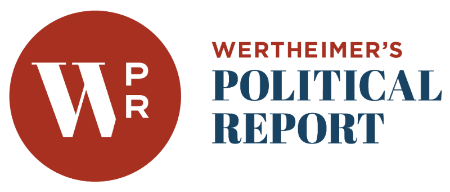Elite Donors Do Double Duty: Presidential Super PACs Attract Wealthy Donors Who Have Maxed Out to Candidates
During the second quarter of 2011, more than 50 individuals donated the legal maximum to Republican presidential candidate Mitt Romney and also dug into their pockets deeper and made additional contributions to Restore Our Future, a candidate-specific Super PAC formed to promote Romney’s campaign for president.
A new analysis by Democracy 21, the Campaign Legal Center and the Center for Responsive Politics shows that 55 of the 75 individuals that donated to Restore Our Future also contributed to Romney’s presidential campaign committee. These double-dipping donors represent almost three-quarters (73 percent) of all of Restore Our Future’s individual donors. Their contributions to Restore Our Future ranged in size from as little as $3,500 to as much as $100,000, $500,000 and even $1 million. These contributions are far in excess of the $2,500 limit per individual, per election, that applies to contributions made to Romney or any other federal candidate.
Overall, these 55 donors to Romney’s presidential campaign contributed a combined total of $6.4 million to the Super PAC supporting Romney – a majority (52 percent) of all the money Restore Our Future raised as of June 30, the joint analysis shows.
Super PACs report semi-annually in an off election year, so there is no information available, for example, on the principal candidate Super PAC supporting Texas Gov. Rick Perry, which was formed after the June 2011 reporting deadline.
In the wake of the U.S. Supreme Court’s Citizens United v. Federal Election Commission ruling last year, Super PACs are allowed to raise unlimited amounts of money from donors – individuals, corporations and unions – which they can use to fund political advertisements for or against federal candidates and to otherwise support or oppose candidates. They cannot donate the money they raise directly to candidates, nor are they allowed to coordinate with candidates’ campaigns, although FEC coordination rules are weak and ineffective.
“The information in the study being released today provides further evidence that confirms presidential campaigns and presidential candidate Super PACs are deeply intertwined and are, in reality, one entity to which the contribution limits applicable to a single federal candidate should be applied,” said Fred Wertheimer, president of Democracy 21, a nonprofit, nonpartisan organization that promotes campaign finance reform. “The presidential candidate Super PAC exists for one reason: to serve as an arm of the presidential campaign for big-money donors to launder unlimited contributions to support the presidential candidate and thereby evade and eviscerate the contribution limits for a presidential candidate enacted to prevent corruption.”
“This analysis offers yet more proof that these candidate-specific Super PACs are nothing more than an end-around existing contribution limits,” said Paul S. Ryan, FEC Program Director at the Campaign Legal Center. “The revolving door of staff between candidates and the Super PACs supporting them makes clear the close relationships between the two. The Super PACs are simply shadow candidate committees. Million-dollar contributions to the Super PACs pose just as big a threat of corruption as would million-dollar contributions directly to candidates.”
“The data set reported so far is still small,” added Sheila Krumholz, executive director of the Center for Responsive Politics, “but it demonstrates the largely uniform donor base shared by these ostensibly ‘independent’ Super PACs and the candidates they support. We will have a much better sense of this relationship after we can review the year-end reports that Super PACs must file on January 31, 2012.”
This is the first presidential election in which Super PACs have existed – and the first where candidate-specific Super PACs are being used by donors to contribute far more money than the candidate contribution limits allow to directly support the candidate.
And Romney’s supporters are not the only ones to be milking the new campaign finance landscape for all it’s worth.
According to the new analysis, during the second quarter of 2011, nine individuals donated to President Barack Obama’s re-election campaign as well as the Super PAC designed to help keep him in the White House, which is named Priorities USA Action.
As of June 30, 24 individuals had donated to Priorities USA Action, meaning the double givers account for 37 percent of all individual donors to the group.
This handful of donors, though, is responsible for the vast majority of the money Priorities USA Action has raised. Collectively, these nine individuals donated $2.6 million to Priorities USA Action – or 82 percent of the total money the group raised.
One man alone is responsible for $2 million of that sum: Jeffrey Katzenberg, the chief executive officer of DreamWorks, who has not only “maxed out” to the Obama campaign but also bundled more than $500,000 for the Obama campaign and the Democratic National Committee so far this year.
And one other Obama bundler is among the donors to Priorities USA Action: Chicago media mogul Fred Eychaner, who donated $500,000 to Priorities USA Action and also bundled between $50,000 and $100,000 for the Obama campaign and the DNC during the second quarter.
As the presidential race heats up, expect even more money to flow into Super PACs and even more donors to be double dipping. As of June 30, Restore Our Future reported raising $12.2 million and Priorities USA Action reported raising $3.2 million — but these groups have said they plan to raise tens of millions of dollars more.
Moreover, Restore Our Future and Priorities USA Action have been recently joined by Super PACs supporting the other presidential campaigns. Every major presidential candidate now has at least one– if not more than one — Super PAC aiding their own campaign efforts. And the first candidate-specific Super PAC already has been formed for a congressional candidate, Sen. Orrin Hatch (R-Utah), to support his Senate re-election campaign in 2012.
